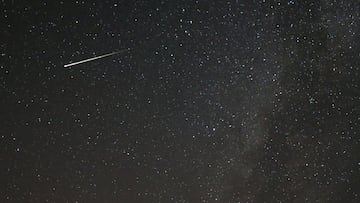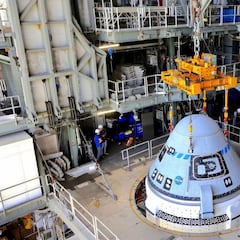Perseid meteor shower: why is August the best month to see it?
The Perseid meteor shower gives skygazers the opportunity to catch a glimpse of some 'shooting stars' - and mid-August is the best time to do so.

For skywatchers hopeful of getting a good look at the Perseid meteor shower, we’re currently in the midst of the peak dates for seeing plenty of action. The meteor shower takes place for about three weeks every year from late July to late August, but is at is most visible in mid-August.
Perseid meteor shower caused by Comet Swift-Tuttle debris
Known by the name Perseid because it appears to be coming from the Perseus constellation of stars, the meteor shower is created by the stream of rubble left by Comet Swift-Tuttle, a chunk of rock and ice some 26km in diameter, as it follows its 133-year orbit around the Sun.
When the comet's path brings it close to Earth, the pebble-sized rocks in its debris stream begin to interact with our atmosphere and, as they burn up, they create the sparkling lights in the sky that are known in everyday terms as ‘shooting stars’.
Perseids at peak between 11 and 13 August
The meteor shower hits its peak between 11 and 13 August, when the Earth's atmosphere comes into contact with the densest part of the comet’s stream of rubble. According to NASA, you may be able to see as many as 40 ‘shooting stars’ per hour when the Perseids are at their zenith.
LIVE: We're streaming the Perseid meteor shower!
— NASA Marshall (@NASA_Marshall) August 12, 2021
Tune in until 5 AM CT (10 AM UTC) for live video from our Meteoroid Environment Office—and learn more about how to see the Perseids in your own backyard >> https://t.co/8UeEc3B307 https://t.co/Y3b1TkYLsL
Best time to watch out for 'shooting stars'
The best time to view the meteor shower is in the pre-dawn hours when the sky is at its darkest, around the 3am mark. The main mistake people make when watching for ‘shooting stars’ is that they don’t wait up long enough, University of Virginia astronomer Edward Murphy told National Geographic: "They go out as soon as it gets dark. The problem is, they’re a few hours too early.”
Related stories
Getting away from the brighter skies of an urban environment will also maximise the number of Perseids you’ll see. If you can’t escape the city lights, NASA says, you’ll still see some meteors, but maybe only one or two an hour rather than 40.
Moonless sky will help Perseid meteor shower watchers
Another source of light that can obstruct people’s view of the meteor shower is moon glare, but in that regard 2021 is a good year to watch the Perseids, as their peak comes just days after a new moon on 8 August. This is the point in the lunar cycle when the sky appears moonless and there is no moonlight, because it is the satellite's dark side that is facing towards Earth.

